Series 3
Series 3, Seminar 1 - Daniel Brennan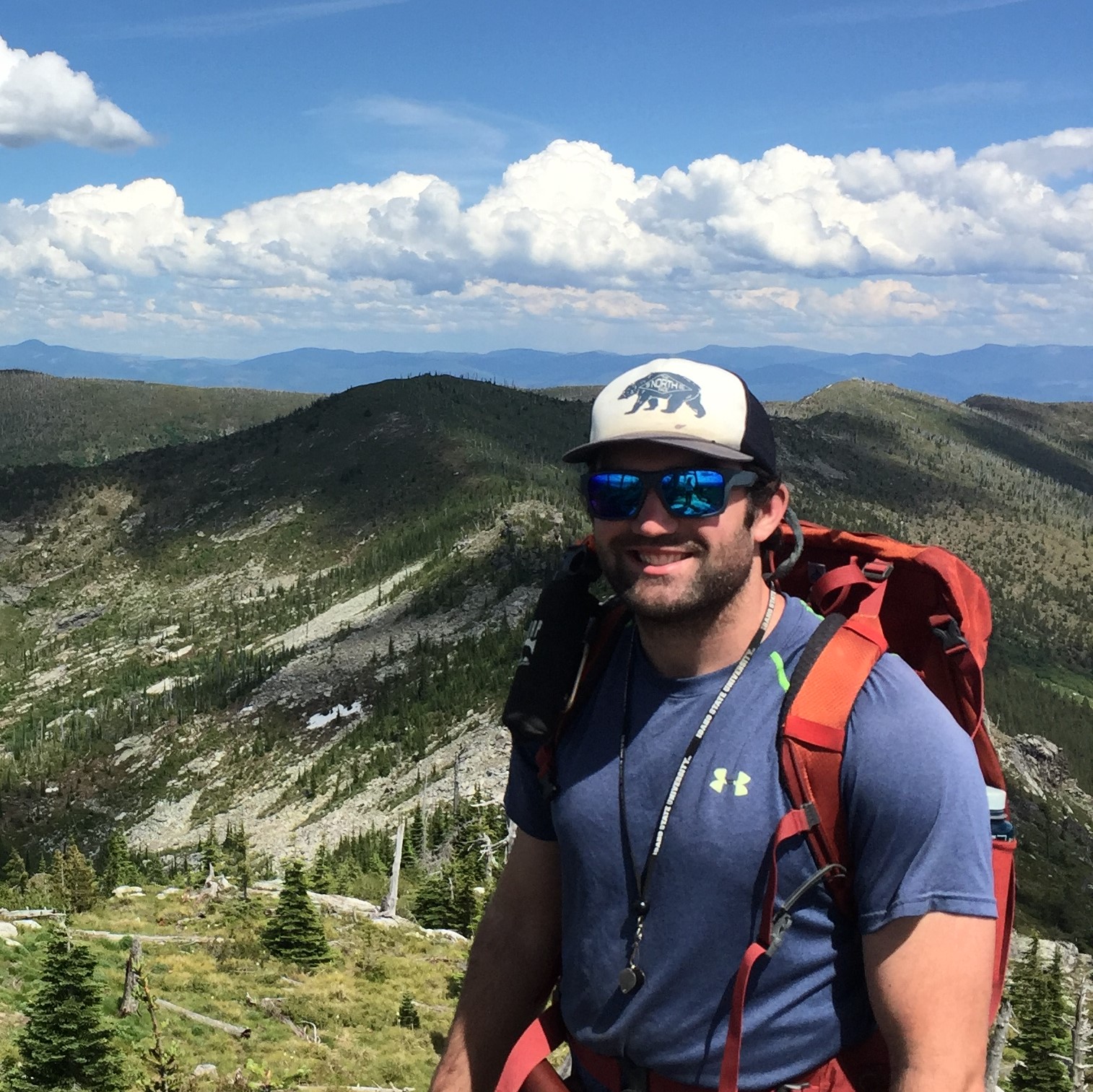 Reconciling paleographic reconstructions with the record of Rodinian rifting in the northwestern United States
Reconciling paleographic reconstructions with the record of Rodinian rifting in the northwestern United States
Speaker bio
Daniel Brennan is a PhD student with the Earth Dynamics Research Group at Curtin University in Perth (Australia). Dan’s current focus is on the Neoarchean-Neoproterozoic regional geologic record of the northwestern U.S., and its implications for global paleogeographic tectonic models. While Dan’s published research has consisted primarily of geologic mapping and tectonostratigraphic (U–Pb, Lu–Hf) provenance studies, his current research is branching into more diverse isotope geochemistry and phase equilibrium modeling. Dan also enjoys teaching and filled a temporary (1 semester) associate lecturer position during his PhD where he taught Physical Geology and Geologic Mapping. Prior to undertaking the PhD, Dan completed a B.Sc. at University of Wisconsin–Eau Claire (2016), and an M.Sc. at Idaho State University (2018). At Idaho State, Dan’s award-winning geologic mapping (2019 USGS Student Geologic Map 1st place winner) redefined a sequence of Neoproterozoic and lower Paleozoic strata. Dan is scheduled to finish his PhD in January 2022.
Abstract
Supercontinent Rodinia assembled through widespread (Grenvillian) orogenic events between 1300 Ma and 900 Ma, and much like its assembly experienced a diachronous break up, perhaps recorded by localized rifting as early as 825 Ma. The western margin of Laurentia (North America) occupied a critical, central location within Rodinia. Despite its important location and its relatively well-studied nature, the evolution of these processes in western Laurentia and the identity of its conjugate margins is a subject of long-standing debate. Here, we present results from the northwestern United States (Washington State), including the Buffalo Hump Formation. The Buffalo Hump Formation unconformably overlies ca. 1.3 Ga strata, and was previously interpreted by some to be a ca. 1.0 Ga “Grenvillian” deposit formed during Rodinia assembly. Our study of ∼2000 detrital zircon grains from the Buffalo Hump Formation identified for the first time a minor (∼1%) yet significant ca. 760 Ma population, which constrains the maximum age of deposition. This indicates an absence of Grenville-age sedimentation and a ca. 760 Ma earliest onset of Neoproterozoic rifting in this region which must be accounted for in paleographic tectonic reconstructions.
Series 3, Seminar 2 - Richard Palin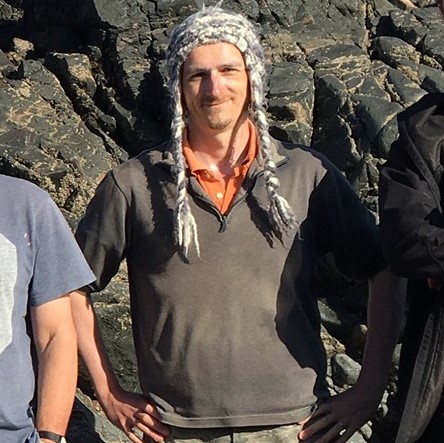 Mafic Archean continental crust prohibited exhumation of orogenic UHP eclogite
Mafic Archean continental crust prohibited exhumation of orogenic UHP eclogite
Speaker bio
Richard Palin completed his PhD at the Department of Earth Sciences, University of Oxford, UK, in 2013, where he studied the thermal and structural evolution of parts of the Himalayan Range and Tibetan Plateau. He then worked as a lecturer and postdoctoral research fellow at the Institute of Geosciences, JGU Mainz, and subsequently joined the Colorado School of Mines, USA, as an Assistant Professor of Metamorphic Geology. He has now returned at long last to Oxford as the Associate Professor of Petrology. His major research interests include process- or technique-oriented studies concerning fluid-rock-melt interactions, changes in metamorphic products and processes through geological time, and the geology of other rocky bodies in our solar system, and beyond.
Abstract
The absence of ultrahigh pressure (UHP) orogenic eclogite in the geological record older than c. 0.6 Ga is problematic for evidence of subduction having begun on Earth during the Archean (4.0–2.5 Ga). Many eclogites in Phanerozoic and Proterozoic terranes occur as mafic boudins encased within low-density felsic crust, which provides positive buoyancy during subduction; however, recent geochemical proxy analysis shows that Archean continental crust was more mafic than previously thought, having greater proportions of basalt and komatiite than modern-day continents. Here, we show via petrological modelling that secular change in the petrology and bulk composition of upper continental crust would make Archean continental terranes negatively buoyant in the mantle before reaching UHP conditions. Subducted or delaminated Archean continental crust passes a point of no return during metamorphism in the mantle prior to the stabilization of coesite, while Proterozoic and Phanerozoic terranes remain positively buoyant at these depths. UHP orogenic eclogite may thus readily have formed on the Archean Earth, but could not have been exhumed, weakening arguments for a Neoproterozoic onset of subduction and plate tectonics. Further, isostatic balance calculations for more mafic Archean continents indicate that the early Earth was covered by a global ocean over 1 kilometre deep, corroborating independent isotopic evidence for large-scale emergence of the continents no earlier than c. 3 Ga. Our findings thus weaken arguments that early life on Earth likely emerged in shallow subaerial ponds, and instead support hypotheses involving development at hydrothermal vents in the deep ocean.
Series 3, Seminar 3 - Paolo Sossi Redox state of Earth’s magma ocean and its Venus-like early atmosphere
Redox state of Earth’s magma ocean and its Venus-like early atmosphere
Speaker bio
Paolo Sossi’s research interests broadly lie in how the high temperature physico-chemical properties (structure, oxidation, geochemistry) of melts, minerals and vapours shape the composition and architecture of the terrestrial planets. To do so, he employs laboratory experiments to mirror geochemical processes, whose products are analysed by a combination of spectroscopic and mass spectrometric techniques in order to derive thermodynamic quantities and physical formalisms.
Abstract
Exchange between a magma ocean and vapour produced Earth’s earliest atmosphere. Its speciation depends on the oxygen fugacity (fO2) set by the Fe3+/Fe2+ ratio of the magma ocean at its surface. Here, we establish the relationship between fO2 and Fe3+/Fe2+ in quenched liquids of silicate Earth-like composition at 2173 K and 1 bar. Mantle-derived rocks have Fe3+/(Fe3++Fe2+) = 0.037 ± 0.005, at which the magma ocean defines an fO2 0.5 log units above the iron-wüstite buffer. At this fO2, the solubilities of H-C-N-O species in the magma ocean produce a CO-rich atmosphere. Cooling and condensation of H2O would have led to a prebiotic terrestrial atmosphere composed of CO2-N2, in proportions and at pressures akin to those observed on Venus. Present-day differences between Earth’s atmosphere and those of her planetary neighbours result from Earth’s heliocentric location and mass, which allowed geologically long-lived oceans, in-turn facilitating CO2 drawdown and, eventually, the development of life.
Series 3, Seminar 4 - Baptiste Debret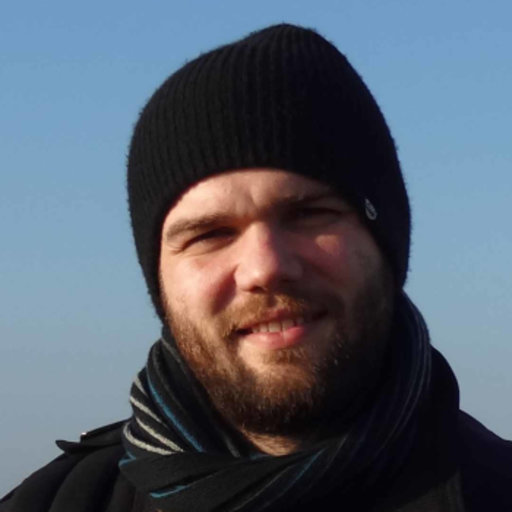 Redox record of the serpentinized forearc mantle wedge
Redox record of the serpentinized forearc mantle wedge
Speaker bio
Baptiste Debret is a permanent researcher employed by the Centre National de la Recherche Scientifique (CNRS) and working at the Université de Paris – Institut de Physique du Globe de Paris. He completed a PhD in metamorphic petrology at the Laboratoire Magmas & Volcans (France, 2010 – 2014), before holding several postdoctoral research associate positions in England for three years, first at Durham University and then at the University of Cambridge. He then moved to the Université Libre de Bruxelles to take up a 3-year fellowship postdoctoral position funded by the “Fond National de la Recherche Scientifique” until October 2019, when he took up his current position at the French CNRS. Dr Debret’s work concerns the cycling of iron (Fe), sulfur (S), carbon (C) and economically important elements, such as Zn and Cu, during fluid/rock interactions between the hydrosphere and the oceanic crust at mid-oceanic ridges and between the deep Earth, the continental crust and the surface in subduction zones. He is particularly interested in the processes that control redox sensitive elements mobility in fluids.
Abstract
Subduction zones are active sites of chemical exchange between the Earth’s surface and deep interior and play a fundamental role in regulating planet habitability. However, the mechanisms by which redox sensitive elements (e.g., iron, carbon and sulfur) are cycled during subduction remains unclear. Here I examine forearc serpentinite clasts recovered during the IODP expedition 366 from deep sea drilling of mud volcanoes formed above the Mariana subduction zone in the Western Pacific. I discuss the conditions of serpentinization at depth trying to decipher the nature of slab derived fluids released at depth and transfer to the mantle wedge.
Series 3, Seminar 5 - Maëlis Arnould Mantle plumes and plate tectonics interactions: some insights from whole-mantle convection models
Mantle plumes and plate tectonics interactions: some insights from whole-mantle convection models
Speaker bio
After completing her PhD in cotutelle between the École Normale Supérieure de Lyon, France and the University of Sydney, Australia, Maëlis Arnould has held post-doctoral research positions at the École Normale Supérieure de Paris, France and the University of Oslo, Norway, before joining the Laboratoire de Géologie de Lyon (LGL-TPE) at the University of Lyon 1, France, as an assistant professor. Her work focuses on the relationships between the dynamics and the rheology of mantle convection and its surface expressions, thanks to the use of whole-mantle convection models that self-generate plate tectonics.
Abstract
Since the emergence of the theory of plate tectonics, the activity of mantle plumes has been extensively linked to the dynamics of plate tectonics. Indeed, from the study of their surface signatures, it has notably been proposed that mantle plumes can serve as an absolute reference frame to reconstruct past plate motions, can potentially drive plate motions through plume push forces, and can act as supercontinent breakers.
Here, we propose to revisit the geodynamics of the coupled evolution of mantle plumes and plate tectonics interactions from the point of view of numerical modeling, using 3D-spherical models of whole-mantle convection. In our models, mantle plumes arise at the core-mantle boundary and self-consistently interact with both the convective mantle and self-generated plate tectonics. After investigating the characteristics and dynamics of model plumes and showing how these compare to Earth’s mantle plumes, we will focus on the dynamics of model plume-ridge interactions and plume-induced subductions. In light of our models, we will then interpret diverse petrological and tectonic observations in a plume-ridge interaction environment (Azores plume – Mid-Atlantic Ridge) and in a plume-subduction interaction setting (proto-Deccan plume – South-Neotethys subduction) in order to geodynamically constrain their coupled long-term evolution and their tectonic consequences.
Series 3, Seminar 6 - Robert Stern, Taras Gerya, Ross Mitchell, & Richard Palin
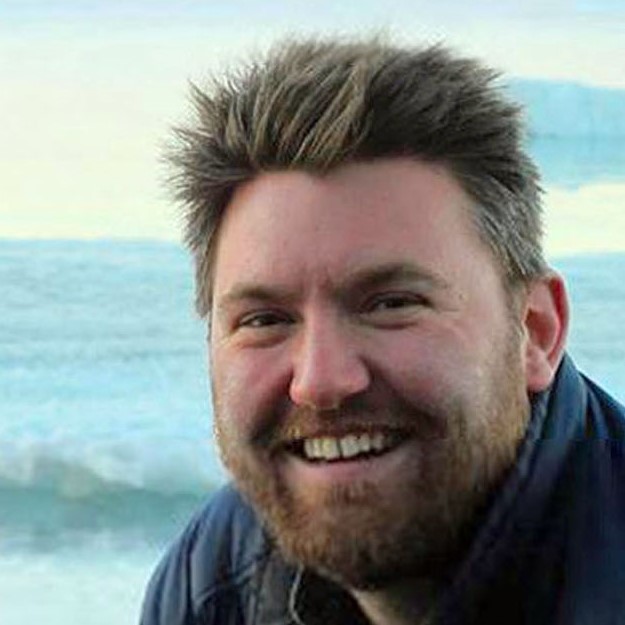

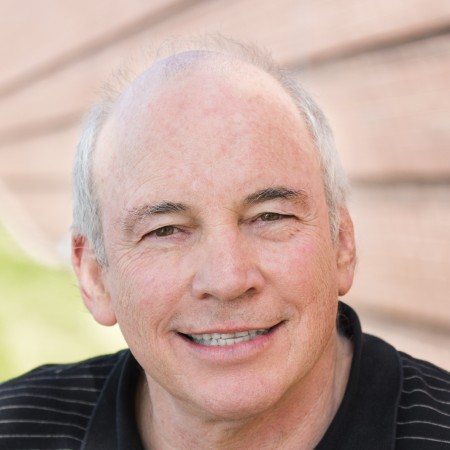 Epic Earth Science Battle: Plate tectonics started early, did it?
Epic Earth Science Battle: Plate tectonics started early, did it?
Speaker bios
Robert Stern is a Professor of Geosciences at the University of Texas at Dallas. He received his PhD in Earth Sciences from the University of California San Diego in 1979. He has more than 40 years of geoscientific research experience, studying the evolution of the continental crust as approached by tectonic, chemical, and isotopic studies of modern processes and ancient products. Geographic foci of such studies include Izu-Bonin-Mariana island arc system in the Western Pacific, Neoproterozoic crust of NE Africa and Arabia, China, and Iran. His exceptional contributions to Earth science has seen him elected as a Fellow of the Geological Society of America and of the American Geophysical Union.
Taras Gerya has been Adjunct Professor for Geodynamics and Analytical and Numerical Modelling of Geological and Planetary Processes in the Department of Earth Sciences at ETH Zürich since 2010. He earned his PhD in petrology from the Moscow State University, Russia, in 1990. He has held a number of positions at the Institute of Experimental Mineralogy of the Russian Academy of Sciences, Chernogolovka, Russia and also at the Geological Faculty of the Moscow State University. Between 2000-2004 he was an Alexander von Humboldt Foundation Research Fellow and Guest Scientist at the Geological Faculty of the Ruhr-University of Bochum, Germany, before joining ETH Zürich’s Department of Earth Sciences in 2004. His research focuses on plate tectonics, geodynamics, planetary processes as well as numerical geodynamic modelling.
Ross Mitchell is a Professor at the Institute of Geology and Geophysics, Chinese Academy of Sciences (IGGCAS) and is interested in how planet Earth works. His areas of expertise include palaeomagnetism, cyclostratigraphy, supercontinents, true polar wander, and Earth history. The Earth system is completely integrated, but plate tectonic theory is not. His research aims to discover the governing dynamics of the supercontinent cycle by taking a systems theory approach.
Richard Palin completed his PhD at the Department of Earth Sciences, University of Oxford, UK, in 2013, where he studied the thermal and structural evolution of parts of the Himalayan Range and Tibetan Plateau. He then worked as a lecturer and postdoctoral research fellow at the Institute of Geosciences, JGU Mainz, and subsequently joined the Colorado School of Mines, USA, as an Assistant Professor of Metamorphic Geology. He has now returned at long last to Oxford as the Associate Professor of Petrology. His major research interests include process- or technique-oriented studies concerning fluid-rock-melt interactions, changes in metamorphic products and processes through geological time, and the geology of other rocky bodies in our solar system, and beyond.
Abstract
Plate tectonics is a well known and established theory and has been extensively studied for many decades. However, there is still little consensus as to the timing of the onset of plate tectonics. In this seasons’ Epic Earth Science Battle, two teams of researchers will debate the issues around constraining the timing of plate tectonics. Will we finally answer the question, did plate tectonics start early?
Battle rules:
- The moderator will flip a coin to decide who will start.
- The two teams will have 20 minutes to present their arguments.
- The moderator will pick 5-6 questions from the audience through the chat and each team will have 2 minutes to respond.
- Each team will have 5 minutes to present their concluding remarks.
- The session will then be open for general discussion/questions.
Series 3, Seminar 7 - Dietmar Müller  Plate tectonic rules, absolute plate motions and plate mantle system evolution
Plate tectonic rules, absolute plate motions and plate mantle system evolution
Speaker bio
Dietmar Müller is Professor of Geophysics at the School of Geosciences, University of Sydney. He received his undergraduate degree from the Univ. of Kiel, Germany, and his PhD in Earth Science from the Scripps Institution of Oceanography, La Jolla/California in 1993. With his EarthByte research group he combines tectonics, geodynamics, and sedimentology to build virtual Earth models from global to regional scales. More details on his biography can be found on his home page: https://www.sydney.edu.au/science/about/our-people/academic-staff/dietmar-muller.html
Abstract
Over the last 25 years the theory of plate tectonics and a growing set of geo-databases have been used to develop global plate models with increasing sophistication, enabled by open-source plate reconstruction tools. Today’s editable open-access community models include networks of evolving plate boundaries and deforming regions, reflecting the fact that tectonic plates are not always rigid. The theory of plate tectonics was originally developed primarily based on magnetic anomaly and fracture zone data from the ocean basins. As a consequence there has been a focus on applying plate tectonics to modelling the Jurassic to present-day evolution of the Earth based on the record of preserved seafloor, or only modelling the motions of continents at earlier times. Modern plate models are addressing this shortcoming with recently developed technologies built as part of GPlates and the pyGPlates python library, utilising evolving plate boundary topologies to reconstruct entirely destroyed seafloor into “deep time”. These models are paving the way for a multitude of applications aimed at better understanding Earth system evolution. In this talk I will focus on a non-traditional method, based on “plate tectonic rules”, to compute absolute plate motions, and I will give a preview of implications for plate-mantle interaction and the long-term evolution of mantle structure.
Series 3, Seminar 8 - Åke Johansson 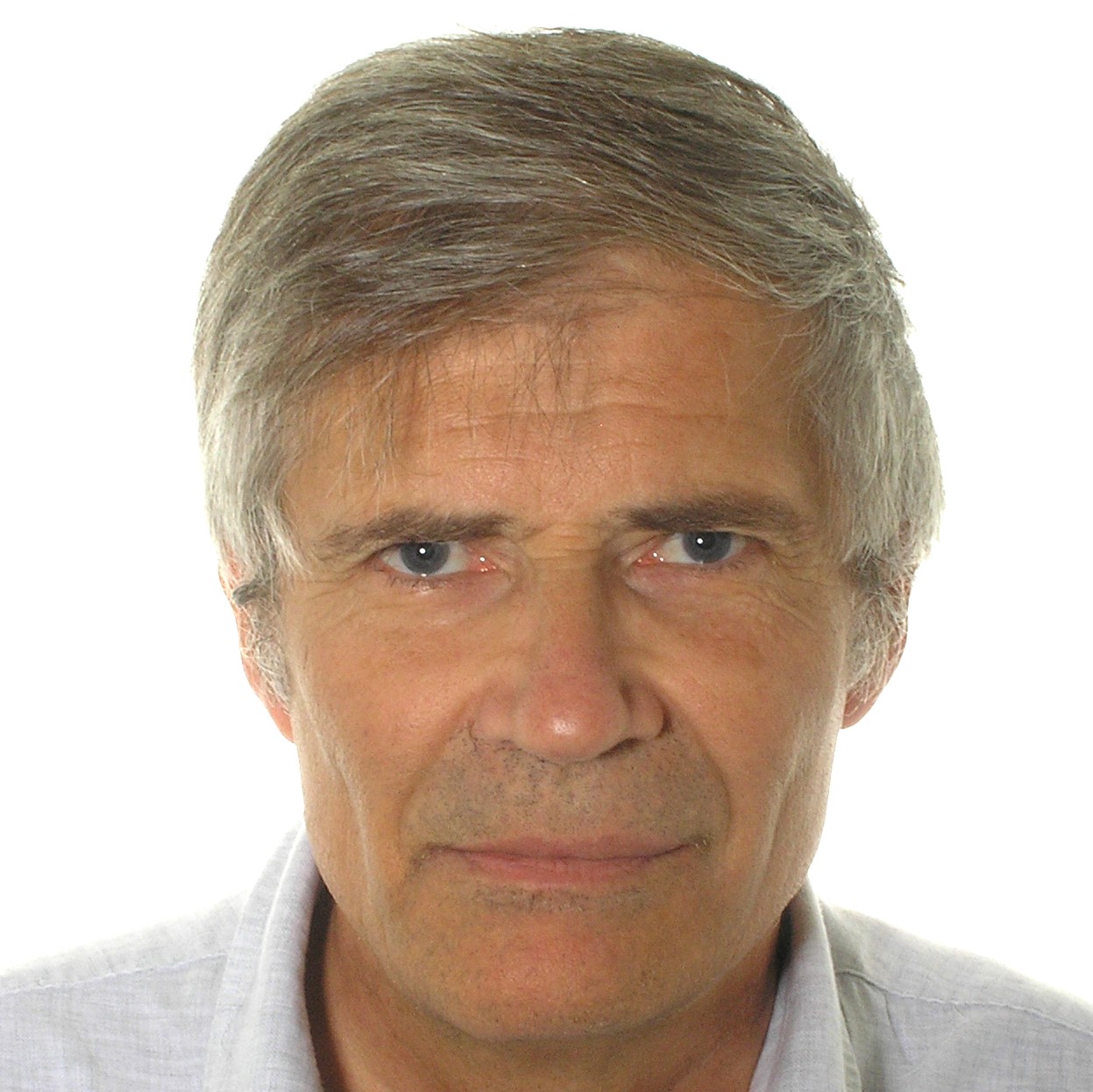 Things you can do from home during a pandemic: A geochronological review of magmatism along the external margin of Columbia and in the Grenville-age orogens forming the core of Rodinia
Things you can do from home during a pandemic: A geochronological review of magmatism along the external margin of Columbia and in the Grenville-age orogens forming the core of Rodinia
Speaker bio
Åke Johansson studied geology at Stockholm University and completed a PhD in 1984 titled “Lead-zinc veins in Sweden” under the supervision of David Rickard of the Ore Research Group. Dr Johansson then went on to work at the isotope geology facility of the Swedish Museum of Natural History in Stockholm. His research has primarily been concerned with the Precambrian geology and evolution of the Fennoscandian Shield, in particular that of southern and central Sweden, using U-Pb geochronology and Sr, Nd and Hf isotope geochemistry, as well as major and trace element geochemistry of various magmatic rock units. Outside of Sweden, he has participated in a project on the Precambrian and Caledonian bedrock of northeastern Svalbard, headed by Professor David Gee from Uppsala University, and worked on the granites on the Danish island of Bornholm together with the late Svetlana Bogdanova from Lund University. Through the work on the evolution of the Fennoscandian Shield, he also developed an interest for how Fennoscandia and Baltica fit into the bigger picture of Proterozoic supercontinents.
Apart from research, Dr Johansson has been heavily involved in efforts inside and outside the museum to popularize geology among the general public in Sweden. This includes answering questions from the public on rocks and geology in the capacity of “geologist-on-call”, organizing activities on “Geology Day” in September each year since 2001, acting as board member and/or chairman of the national Geology Day organization from 2010 to 2020, helping with geology exhibitions at the museum, and writing popular science articles about geology in Swedish.
Dr Johansson is currently working on a popular science book on the geological evolution of Sweden, together with some colleagues.
Abstract
A total of 4212 magmatic U-Pb ages in the range 2300 to 800 Ma have been compiled from orogenic belts along the external margin of the supercontinent Columbia (ca. 1800-1300 Ma) and from the subsequent collisional orogens forming the core of the supercontinent Rodinia (ca. 1000-600 Ma). The age data are derived from Laurentia (North America and Greenland, n = 1208), Baltica (NE Europe, n = 1922), Amazonia (central South America, n = 628), Kalahari (southern Africa and Dronning Maud Land in East Antarctica, n = 265) and western Australia (n = 199). Laurentia, Baltica and Amazonia (and possibly other cratons) most likely formed an external active continental margin of Columbia from its assembly at ca 1800 Ma until its dispersal at ca 1260 Ma, after which all cratons studied were involved in the Rodinia-forming Grenvillian orogeny. However, the magmatic record is not smooth and even but highly irregular, with marked peaks and troughs, both for the individual cratons or continents and for the combined data set.
The magmatic peaks typically range in time from a few tens of million years up to around hundred million years, with troughs of comparable length. Some magmatic peaks are observed on multiple cratons, whether by coincidence or because of paleogeographic proximity and common geodynamic setting, while others are not. The best correlation, 0.617, is observed between Baltica and Amazonia, consistent with (but not definitive proof of) them being close neighbours during the Proterozoic. Correlation factors between the other cratons, also between Laurentia and Baltica, are much lower, below 0.15. The detailed evolution before and during the final Grenvillian collision is also largely diachronous between all continents involved. After 900 Ma, magmatic activity had ceased in all areas investigated, attesting to the position of most of them within the stable interior of Rodinia.
Series 3, Seminar 9 - Sheree Armistead 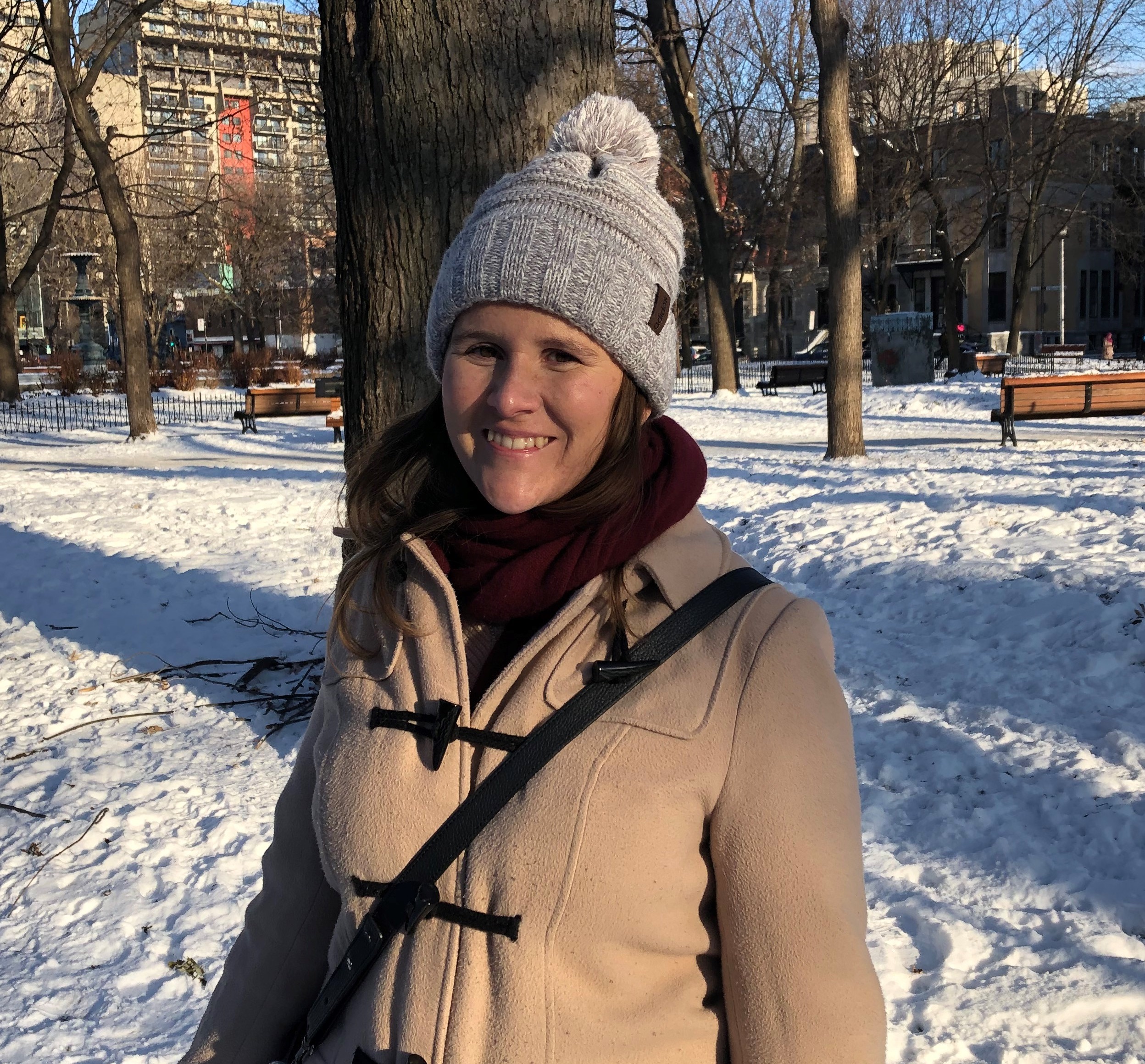 The origin of Pb isotope variability in the Archean
The origin of Pb isotope variability in the Archean
Speaker bio
Sheree Armistead is a Postdoctoral Research Fellow with the Geological Survey of Canada and Laurentian University. She has recently relocated to Hobart and is an adjunct researcher at the University of Tasmania. Sheree’s research explores the links between plate tectonics, supercontinent cycles and mineral systems, and how these change through time. She is especially interested in isotope geochemistry and using computational/statistical techniques to analyse large datasets both temporally and spatially. Sheree completed her PhD at the University of Adelaide in 2019 following two years working as a geochronologist and mineral systems geologist at Geoscience Australia in Canberra. In her current postdoctoral research, Sheree is working on a global compilation of isotope data (primarily Pb–Pb) to unravel the secular changes in mineral deposits and tectonics throughout Earth’s history. This work aims to understand the relationship between the Pb isotopic evolution of terranes and their mineral endowment, with a focus on the Superior Province in Canada. During her PhD, Sheree investigated the tectonic evolution of Madagascar and India during the Precambrian by integrating large datasets of isotopic data and structural geology. This work contributes to broader aims of reconstructing tectonic plates of the entire Earth from the Neoproterozoic to present.
Abstract
Isotopic proxies are widely used to understand the evolution of Earth’s crust and mantle. Of these, Pb isotopes are arguably the most complex with several aspects that remain problematic. Nevertheless, they are generally considered to be more sensitive to crustal contamination than other isotope systems such as Nd and Hf, and have been used to understand early Earth evolution processes and large-scale tectonic cycles. We present a global Pb isotope compilation (http://thera2.usask.ca:8092/$/) that comprises over 25,000 analyses. Like other Pb isotope studies, we have focussed on data from VMS and Lode Gold deposits for several reasons, but most importantly because they occur throughout most of Earth’s history from 3.5 Ga to present, allowing us to assess long-term secular and cyclical changes. Pb isotope signatures for Archean deposits are dramatically different to those that formed in the last c. 1000 Ma of Earth’s history. The focus of this study is the origin of low model source µ (238U/204Pb) signatures in some Archean cratons, particularly the Superior Province. How these variable signatures can form so early in Earth’s history is investigated here.
Series 3, Seminar 10 - Bernhard Steinberger 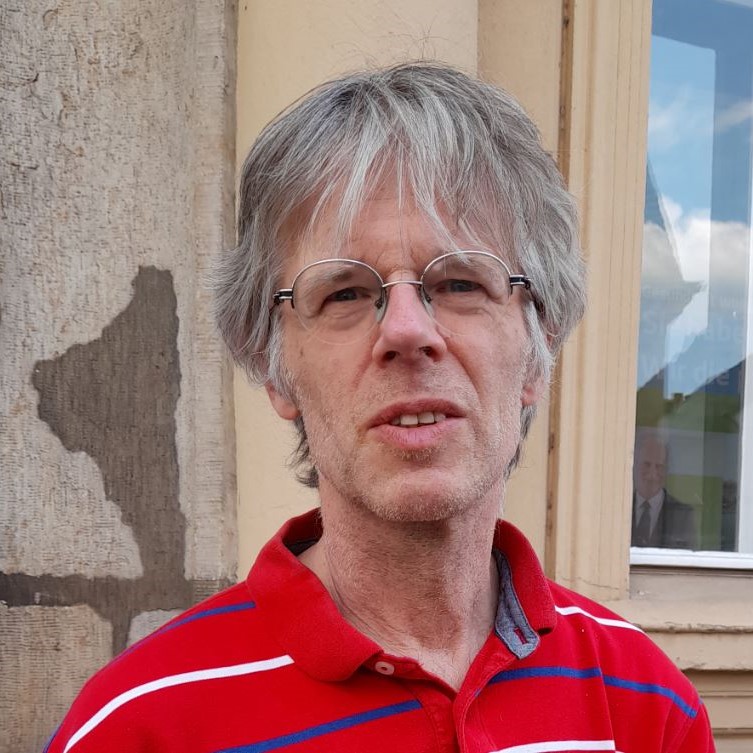 Plume-induced plate rotation triggering subduction initiation
Plume-induced plate rotation triggering subduction initiation
Speaker bio
Bernhard Steinberger is a geodynamic modeller working at the GFZ German Research Centre for Geosciences in Potsdam. He received his undergraduate degree from the Univ. of Munich, Germany, and his PhD in Geophysics from Harvard University in 1996. He has previously worked in Academia Sinica (Taipei, Taiwan), Univ. Frankfurt, CIRES (UC Boulder), BGI (Bayreuth), JAMSTEC (Yokosuka, Japan), and NGU (Trondheim). His research is mostly concerned with mantle flow modelling, and how various observations such as geoid, topography and lithospheric stresses can be used to constrain such models. Some of his specific research interests are mantle plumes, their generation and interaction with large-scale mantle flow and the lithosphere – in particular spreading ridges, the relation of mantle flow and plate motions – especially devising absolute reference frames for the motion of plates over the mantle, how mantle flow causes uplift and subsidence of the surface (dynamic topography), and how the re-distribution of masses inside the Earth due to mantle flow changes the orientation of the entire Earth relative to its spin axis (true polar wander).
Abstract
We show that a plume impinging near the end of a boundary between two plates may cause a relative plate rotation around a pole that is located close to that plate boundary, with extension on that part of the boundary near the plume and convergence on the other side. This may especially occur if a continental craton near the plume acts like an “anchor”. This concept is applied to the India-Africa plate boundary and the Morondova plume, which erupted around 90 Ma, but may have influenced plate motions as early as 105-110 Ma. If there is negligible friction, i.e. there is a pre-existing weak plate boundary, we estimate that the total amount of convergence generated in the northern part of the India-Africa plate boundary can exceed 100 km, which is widely thought to be sufficient to initiate forced, self-sustaining subduction.
Series 3, Seminar 11 - Emma Tomlinson 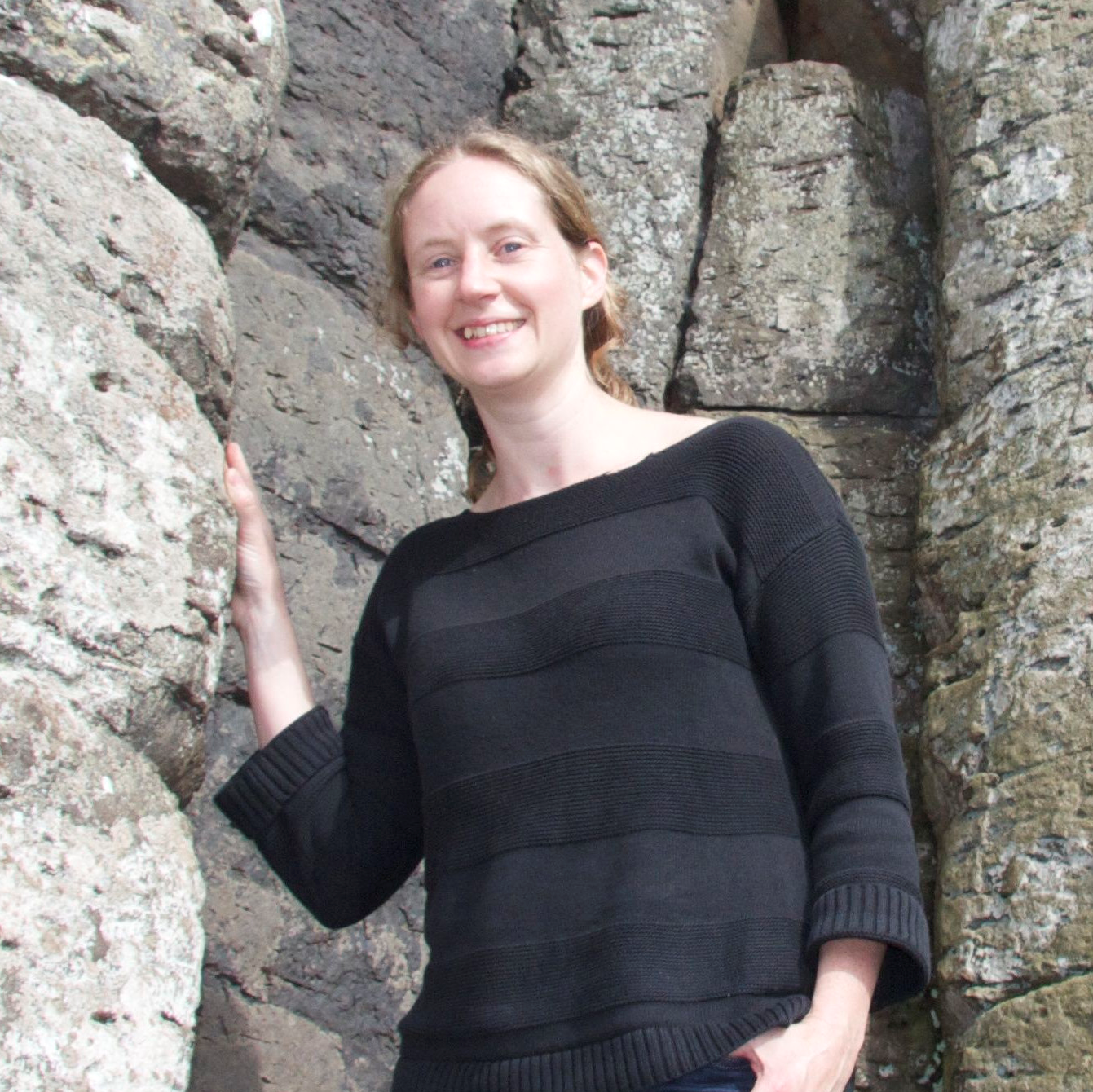 Petrological peculiarities of the Archaean lithosphere
Petrological peculiarities of the Archaean lithosphere
Speaker bio
Emma Tomlinson is Associate Professor at Trinity College Dublin, Ireland. Her research spans a broad range of fields and timescales from understanding the origin and evolution of the Archaean lithosphere and to unravelling the frequency-composition evolution of Quaternary magmatic systems through tephrochronology and investigating the origin of geochemical enrichments in active peat bogs. Her current focus, and the subject of her talk, is the petrological peculiarities of cratonic mantle peridotite.
Abstract
The formation of the Archean lithosphere was a key event in the history of the Earth, resulting in the construction of the first continents, termed cratons, and laying the foundations of our habitable planet. The Archaean lithosphere is more strongly depleted than younger, Phanerozoic lithospheric mantle, and is widely considered to have formed as the residue after extensive and protracted mantle melting. Peridotite xenoliths from the Archaean mantle contain more garnet than expected in high degree melting residues, a feature which we relate to exsolution exsolution from Al-rich pyroxene during cooling. Peridotite xenoliths from the Archaean mantle also extend to higher silica contents than expected from simple melting of fertile peridotite. Silica enrichment manifests as high orthopyroxene contents, and such silica-rich peridotites dominate the Kaapvaal craton but are also an important component of the cratonic lithosphere below the Siberian, Slave and Rae cratons. Various models have been proposed to explain silica enrichment in cratonic peridotites, here we examine the role of reaction between peridotite mantle and upwelling komatiite melt during craton formation as a possible cause of silica enrichment.
Series 3, Seminar 12 - Andy Biggin 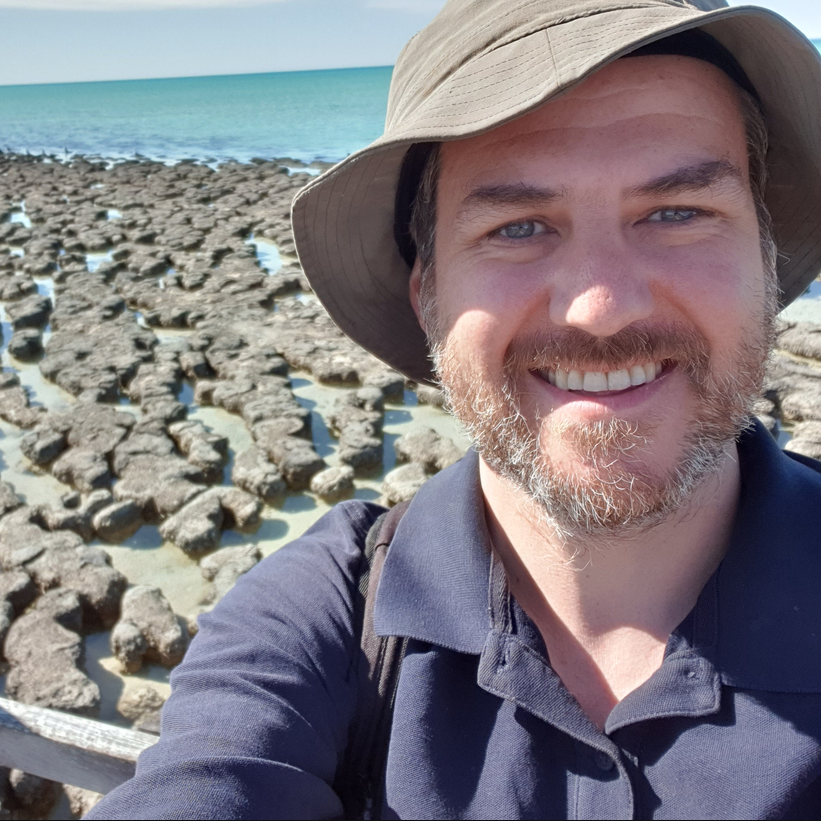 Palaeomagnetic field behaviour over the last 2 billion years and its significance for Earth’s thermal evolution
Palaeomagnetic field behaviour over the last 2 billion years and its significance for Earth’s thermal evolution
Speaker bio
Andy Biggin leads the University of Liverpool’s Geomagnetism Laboratory and the DEEP research group based within it. He has worked in labs in Mexico, France, and Netherlands previously, being a recipient of both a NERC Advanced Fellowship and a Leverhulme Research Leadership Award. His research focuses on describing and explaining the past behaviour of Earth’s magnetic field on timescales from centuries to billions of years which has required him to work on materials ranging in age from Archaean to archaeological. Andy’s current research focuses on obtaining full-vector palaeomagnetic measurements from igneous rocks and on integrating such data into numerical simulations of Earth’s core dynamo.
Abstract
Earth’s magnetic field is generated by a dynamo process operating in the liquid outer core that is fuelled, ultimately, by the transfer of heat across the core-mantle boundary. Rocks of all ages have the potential to preserve the magnetic field as they form and therefore to yield constraints on evolving conditions deep in Earth’s interior. One of the most significant events in the history of the geodynamo is the nucleation of Earth’s inner core which introduced a new power source in the form of buoyancy from light elements released at the base of the core. Here we will review recent efforts to estimate the age of this event and present palaeomagnetic measurements that are pertinent to this and wider questions of how deep Earth dynamics and evolution may have left signatures in records of palaeomagnetic behaviour.
